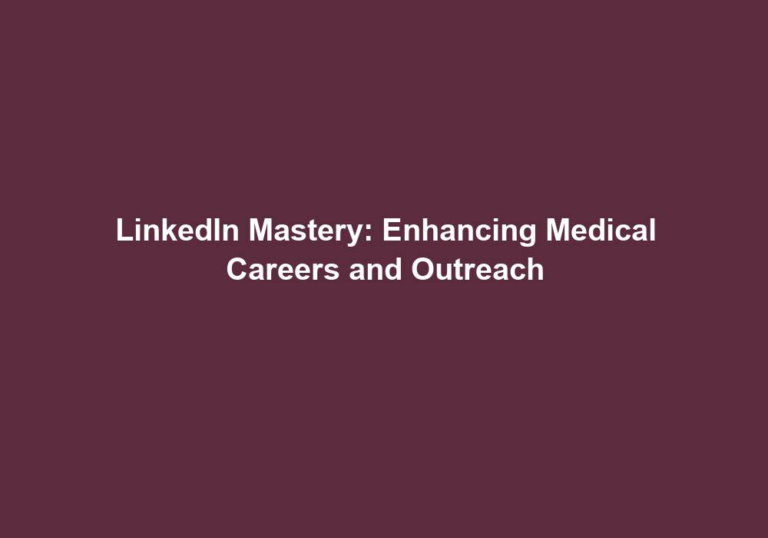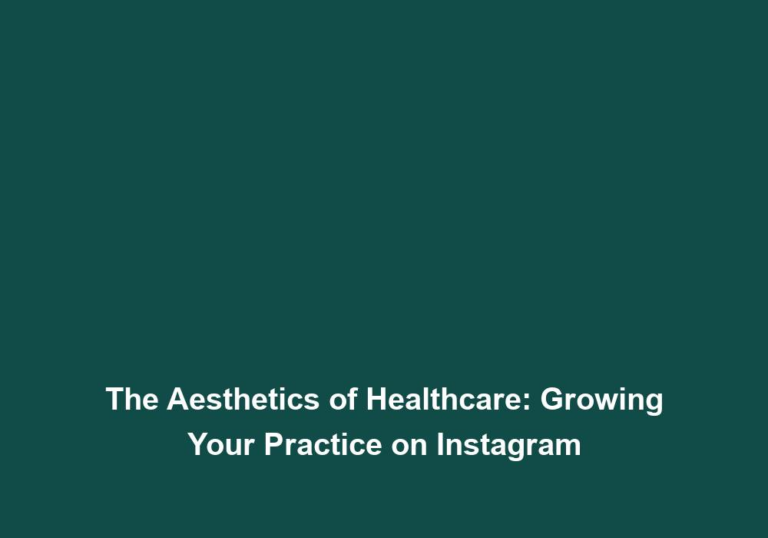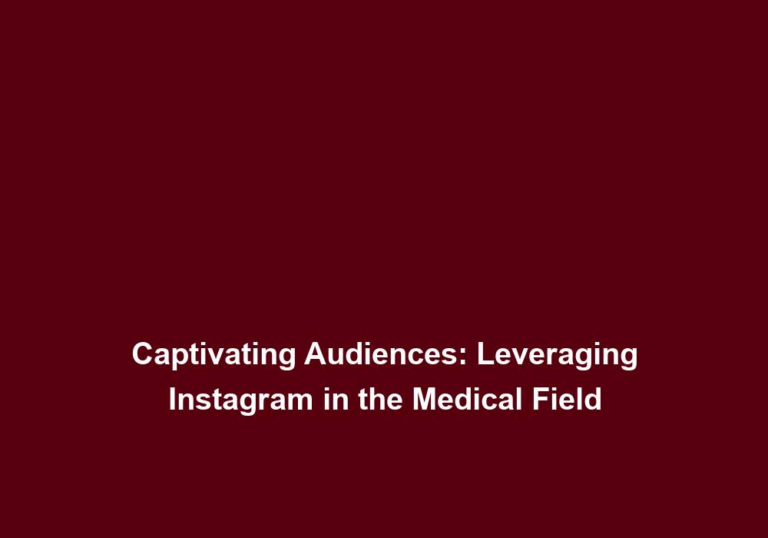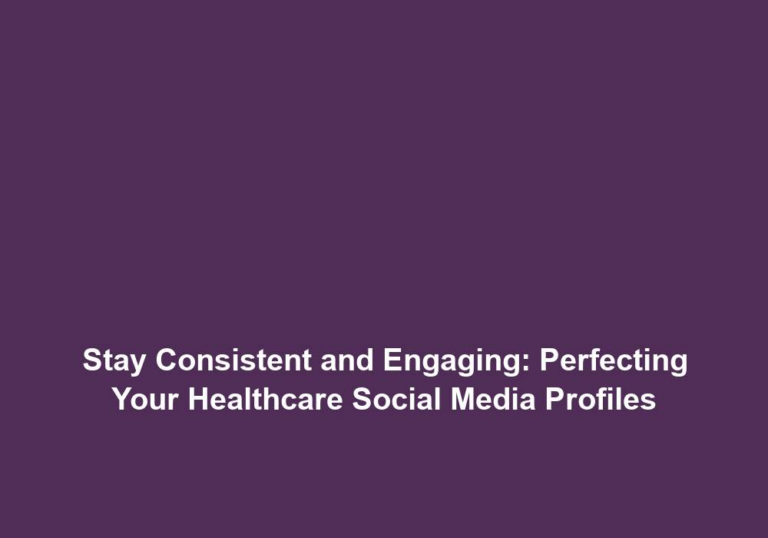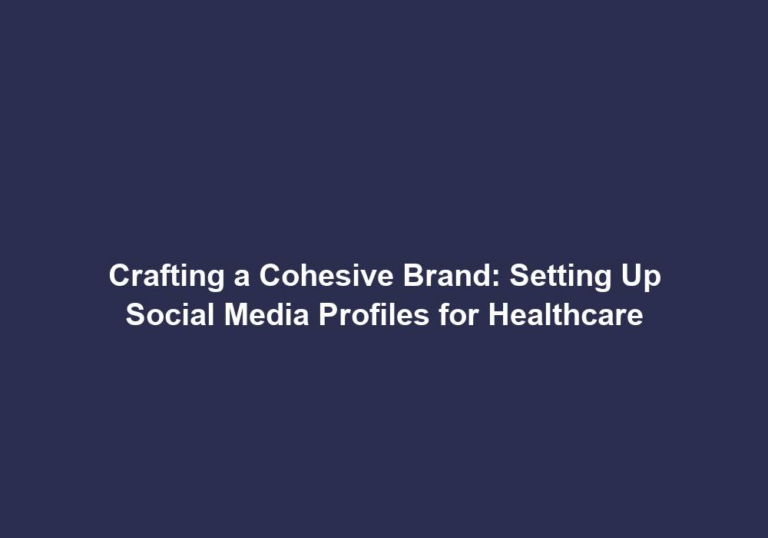Harnessing LinkedIn: Building Professional Networks for Doctors
In today’s digital age, social media platforms have revolutionized the way professionals connect and collaborate. LinkedIn, in particular, has emerged as a powerful tool for doctors to build and nurture their professional networks. With its vast user base of professionals from various industries, LinkedIn offers a unique opportunity for doctors to enhance their visibility, share knowledge, and forge valuable connections within the medical community. This article will explore the strategies and best practices for doctors to harness the full potential of LinkedIn to build robust professional networks.
Introduction
In today’s digital age, social media platforms have revolutionized the way professionals connect and collaborate. LinkedIn, in particular, has emerged as a powerful tool for doctors to build and nurture their professional networks. With its vast user base of professionals from various industries, LinkedIn offers a unique opportunity for doctors to enhance their visibility, share knowledge, and forge valuable connections within the medical community. This article will explore the strategies and best practices for doctors to harness the full potential of LinkedIn to build robust professional networks.
Understanding the Power of LinkedIn for Doctors
LinkedIn serves as an online hub for professionals, allowing them to showcase their expertise, connect with peers, stay updated with industry trends, and explore career opportunities. For doctors, LinkedIn provides a platform to establish thought leadership, collaborate on research, and seek mentorship from experienced professionals. By leveraging the power of LinkedIn, doctors can expand their professional circles, strengthen their reputation, and open doors to new career prospects.
When doctors harness the power of LinkedIn, they can establish themselves as thought leaders in their respective fields. By regularly sharing insights, updates, and relevant articles, doctors can showcase their expertise and contribute to ongoing discussions within the medical community. This not only enhances their professional reputation but also attracts like-minded professionals who are interested in their work.
LinkedIn also provides doctors with the opportunity to collaborate on research projects. By connecting with researchers, principal investigators, and professors who share similar research passions, doctors can explore potential collaborations and partnerships. LinkedIn’s advanced search filters enable doctors to find professionals with specific research interests, academic affiliations, or geographical locations, making it easier to identify potential collaborators and establish meaningful connections.
Additionally, LinkedIn allows doctors to seek mentorship from experienced professionals in their field. By connecting with and engaging with industry experts, doctors can gain valuable insights, guidance, and advice to further their career development. This mentorship can be invaluable in navigating the challenges and opportunities within the medical field.
Optimizing Your LinkedIn Profile
To effectively build a professional network on LinkedIn, doctors must start by optimizing their profiles. Here are some key tips on how to create a compelling LinkedIn profile:
-
Professional Headline: Craft a concise and impactful headline that highlights your specialization, expertise, and achievements. For example, Experienced Cardiologist | Pioneering Researcher | Advocate for Cardiovascular Health. This headline should immediately grab the attention of others in the medical field and provide a clear understanding of your expertise.
-
Summary: Write a compelling summary that encapsulates your professional journey, key accomplishments, and areas of interest. Be sure to include relevant keywords to enhance your profile’s visibility in search results. This summary should highlight your unique selling points and provide a snapshot of your career achievements.
-
Experience and Education: Provide a comprehensive overview of your work experience, clinical roles, academic qualifications, and professional affiliations. Highlight any notable achievements, publications, or research projects. This section should demonstrate your expertise and showcase your contributions to the medical field.
-
Skills and Endorsements: Identify and list your core competencies, medical skills, and relevant certifications. Encourage colleagues and peers to endorse these skills, as it adds credibility to your profile. This section should highlight your strengths and areas of expertise.
-
Recommendations: Request recommendations from colleagues, mentors, or patients who can vouch for your expertise and professionalism. These testimonials help build trust and showcase your value as a doctor. Recommendations from others in the medical field can significantly enhance your profile’s credibility.
By optimizing your LinkedIn profile, you can ensure that it stands out among other professionals in the medical field. A compelling profile that highlights your achievements, expertise, and unique selling points will attract the attention of potential connections and increase your chances of building a robust professional network.
Building a Network of Peers and Colleagues
Once your LinkedIn profile is optimized, it’s time to start expanding your network within the medical community. Here’s how you can build a solid network on LinkedIn:
-
Connect with Colleagues: Reach out to current and former colleagues, classmates, and fellow professionals in your field. LinkedIn makes it easy to search and connect with people based on their professional background and mutual connections. By connecting with colleagues, you can strengthen existing relationships and foster new connections within the medical community.
-
Join Relevant Groups: Participate in LinkedIn groups dedicated to your medical specialty or areas of interest. Engage in discussions, share insights, and connect with like-minded professionals. This allows you to stay updated with industry trends and forge meaningful connections. Joining and actively participating in relevant groups can significantly expand your professional network.
-
Attend Virtual Events and Webinars: LinkedIn hosts a variety of virtual events and webinars related to healthcare and medicine. Attend these events to expand your knowledge, network with industry experts, and establish your presence within the medical community. Actively participating in these events can help you build connections with professionals who share similar interests and goals.
-
Engage with Content: Be an active participant on LinkedIn by engaging with relevant content. Like, comment, and share posts that resonate with you. This not only helps you stay connected with your network but also increases your visibility among other professionals. Engaging with content can spark conversations, attract new connections, and establish you as an active member of the medical community.
-
Publish Thought Leadership Content: LinkedIn’s publishing platform offers an excellent opportunity for doctors to showcase their expertise. Write and publish articles on trending medical topics, research studies, or healthcare advancements. This positions you as a thought leader and attracts professionals who are interested in your field. By regularly publishing thought leadership content, you can establish yourself as an authority in your area of expertise and attract like-minded professionals to your network.
By actively building a network of peers and colleagues on LinkedIn, doctors can tap into a vast pool of knowledge, expertise, and opportunities within the medical community. Building connections with professionals who share similar interests and goals can lead to collaborations, mentorship opportunities, and career advancements.
Leveraging LinkedIn for Research Collaboration
LinkedIn can be a valuable tool for doctors seeking research collaborations and partnerships. Here’s how you can leverage LinkedIn for research purposes:
-
Explore Research Groups and Institutions: Utilize LinkedIn’s search feature to find research groups, institutions, or organizations working in your field of interest. Connect with researchers, principal investigators, and professors who share similar research passions. By reaching out to professionals in your field, you can explore potential research collaborations and partnerships.
-
Share Research Findings and Publications: LinkedIn allows you to share your research findings, publications, and case studies with a wide audience. This helps you gain recognition, receive feedback, and potentially collaborate with other researchers in your field. By sharing your research on LinkedIn, you can attract the attention of professionals who are interested in your work and create opportunities for collaboration.
-
Utilize Advanced Search Filters: LinkedIn’s advanced search filters enable you to find professionals with specific research interests, academic affiliations, or geographical locations. This makes it easier to identify potential collaborators and establish meaningful connections. By utilizing these search filters, you can narrow down your search and connect with professionals who are relevant to your research goals.
-
Join Research-focused Groups: Engage with LinkedIn groups focused on research, clinical trials, or medical advancements. Actively participate in discussions, seek advice, and share your expertise. This not only expands your network but also increases your visibility within the research community. By joining research-focused groups, you can connect with professionals who have similar research interests and create opportunities for collaboration.
LinkedIn provides a platform for doctors to connect with researchers, share their research findings, and explore potential collaborations. By leveraging the features and capabilities of LinkedIn, doctors can expand their network of research professionals, gain recognition for their work, and contribute to advancements in the medical field.
Conclusion
LinkedIn has become an indispensable platform for doctors looking to build professional networks, collaborate on research, and stay connected with the medical community. By optimizing your LinkedIn profile, actively engaging with peers, and leveraging the platform’s features, doctors can enhance their visibility, establish thought leadership, and open doors to new opportunities. Harnessing the power of LinkedIn can truly transform the way doctors connect, collaborate, and advance in their careers. So, embrace the potential of LinkedIn and embark on a journey to build a strong and thriving professional network in the medical field.


